
Why you should stop using bleach
Share: Facebook Pinterest LinkedIn When it comes to large-scale cleaning sessions, we tend to use chemical cleaning products that are either wrongly or rightly acclaimed

Limestone or scale is a mixture of minerals from various origins that pile up over time on surfaces exposed to water. The windows of the living room, kitchen, bathroom, and certain elements of dishes are the most exposed. If you have a habit of cleaning them regularly, you will be rid of them gradually. However, if you rarely clean your windows, the scale will become encrusted and resist ordinary cleaning attempts. Regardless of your situation, we have planned reliable tips that will allow you to remove limestone on windows and your glass objects. Discover them in this blog post.
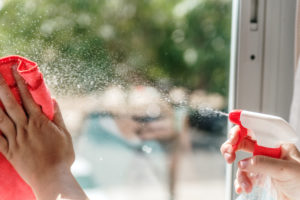
When scales cover the window of your bathroom or the water pitchers of your kitchen, remember white vinegar as a reliable solution. Indeed, this natural acid presents no danger to health and can be handled without great precaution. Moreover, you can easily acquire it in your regular shopping store and in addition to cleaning windows, it can serve other purposes for home maintenance. Regarding the removal of scale with white vinegar, here is how you should proceed:
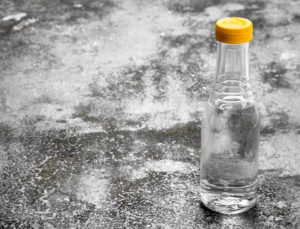
Resistant stains left by successive water jets on your windows can be easily removed with lemon juice. Like vinegar, this citrus fruit is also a natural acid, as it contains 5% citric acid. It is essentially recognized for its anti-scale and disinfectant properties. To better use it against the scales that tarnish your windows, follow these instructions:
To enhance the descaling and antiseptic effect, you can combine lemon juice with white vinegar. It is a mixture that is safe for both health and the environment. To be sure, check here the list of cleaning products to never associate.
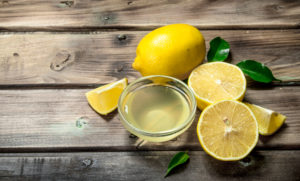
To make scaled and tarnished windows shine, you can play little chemists by concocting your homemade ecological cleaner from water, alcohol, and vinegar. Combine them in equal parts and use the obtained solution as follows:
To support the action of vinegar, baking soda can come to the rescue as an additive. To do this, spread it on the surface to be cleaned before adding white vinegar. You will witness a chemical reaction, an effervescent foam that will dissolve the embedded scale. Let the solution act and wait for the end of the reaction before using an old toothbrush, then rinse the surface with lukewarm water.
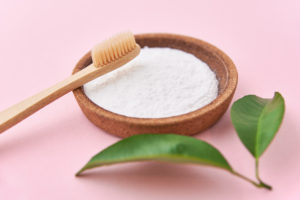
White stone is a ready-to-use cleaner, endowed with real anti-scale and antiseptic properties. It is also a proven degreaser, and therefore ideal for deep cleaning the surface of your windows. To use it effectively, follow these instructions:
One of the main enemies of glass is humidity. This is precisely why bathroom windows that are constantly exposed to it are the most scaled. To remove them, you need to use powerful cleaning products like hydrogen peroxide and follow this procedure:
Good to know: to prevent the formation of limescale and mold from water vapor, provide proper ventilation in the bathroom. If you don’t have a ventilation system, try opening the window to let in the air.
There are many eco-friendly products that are very effective in removing limescale from windows. Like the eau de maison window cleaner, which is a natural product without controversial materials that allow for easy cleaning of surfaces without leaving streaks and without rinsing.

The Agrumea window and mirror cleaner was designed to have optimal effectiveness in its field. It requires no mixing with other cleaning agents and guarantees the effectiveness one would expect from this type of product.
Particularly resistant scales can only be removed by a powerful limescale remover like ammonia. However, note that this product is very dangerous as it contains very strong chemical components that should not be touched or inhaled. Ammonia is not a natural cleaner, and if you use it, take necessary precautions by wearing gloves and a mask.
First, fill a container with hot water and add a little ammonia and dish soap. After protecting your hands, moisten a microfiber cloth or sponge with the mixture and scrub the windows. Try to gently make rotating movements on the glass to completely eliminate embedded scales. If necessary, use a scraper or spatula for windows to get rid of thick or very resistant parts. Now, use a paper towel or absorbent paper to remove dirt. Finally, rinse the windows with soapy water and dry them with a rubber window squeegee.
Also, no matter what cleaning trick you use, don’t forget the necessary prerequisites for perfect cleaning. Make sure to proceed with the operation during cloudy times (ideally in the late evening) so as not to see streaks appear later.
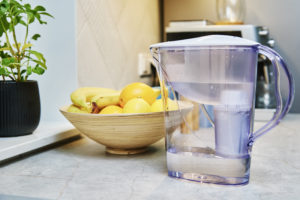
It should be noted that the accumulation of limescale mainly comes from the water we use. Hard water, which is very high in dissolved ions, particularly calcium ion Ca2+ and magnesium ion Mg2+, has much to do with it. Practically, hard water is water filled with limescale, which is responsible for depositing scales on windows. So, thinking about purifying your water daily, with a water softener for example, is a preventive approach against limescale deposition.

Share: Facebook Pinterest LinkedIn When it comes to large-scale cleaning sessions, we tend to use chemical cleaning products that are either wrongly or rightly acclaimed

Share: Facebook Pinterest LinkedIn Are you looking for a way to clean your home naturally, without using harsh chemicals? Running out of ideas for natural

Share: Facebook Pinterest LinkedIn Are you looking for a way to clean your bathroom naturally, without using harsh chemicals? If yes, you’ll love these natural